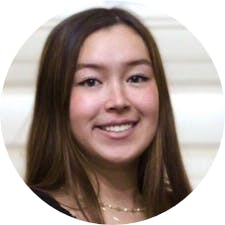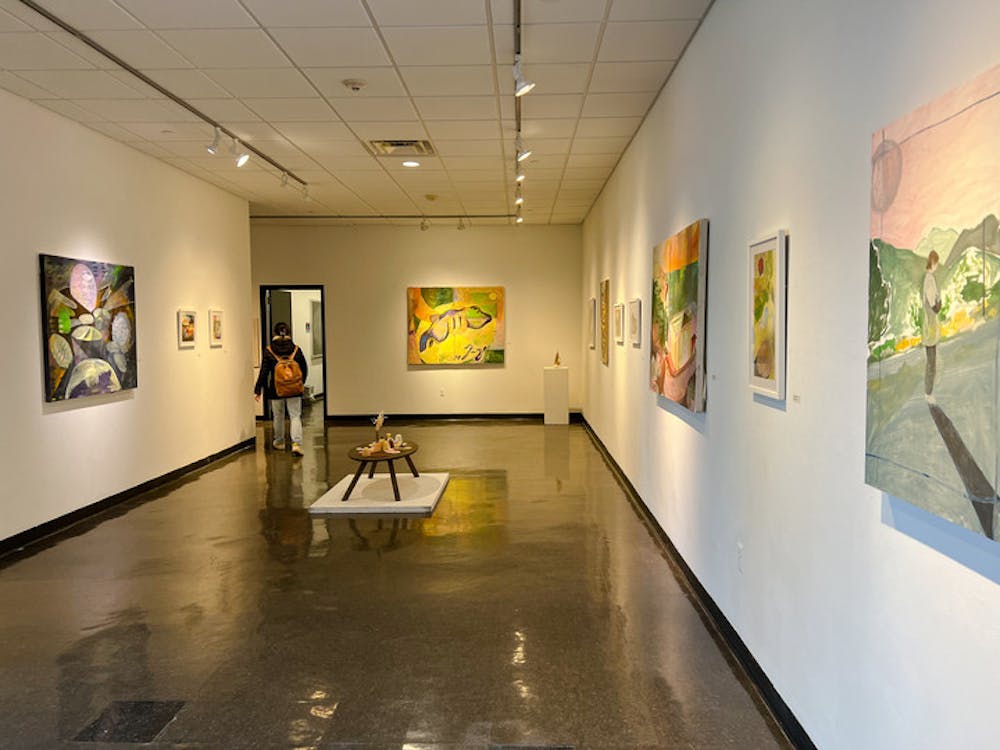Seniors concentrating in visual arts have begun showcasing their thesis projects as part of the department’s semester-long capstone exhibitions.
Each student’s work is showcased for a week during the semester in one of three gallery spaces at the List Art Center, free for viewers to enjoy.
Last fall, seniors in the department were entered into a lottery system to receive a time slot for their exhibition, according to Professor of Visual Art Leslie Bostrom, who is chair of the department.
The exhibitions represent a culmination of years of hard work in the Department of Visual Art, she added.
The most important thing is that students graduate not only with skills in fine arts but also the ability to think critically about themselves and the world, Bostrom said. The department aims to ensure that graduating students know “what they want to do and what they want to express, and then (how to) do it well.”
The Herald spoke to three of the featured artists in the department about their showcases.
‘Creating art that I like to create’: Amanda Tabet ’23 and ‘Human Conditions and Sensations’
The daughter of a photographer, Tabet has been exposed to visual arts from a young age. But it was not until the pandemic that these interests became more focused.
“When COVID hit, I had a lot of free time on my hands,” she told The Herald. To fill this time, she began painting and selling sneakers on her Instagram account, @tabbysneakers. “That’s kind of when I knew … I love painting, I love design.”
When planning the theme for her capstone exhibition, which ran from Feb. 24 to March 2, Tabet said she “wanted to pick apart at feelings that every human experiences.”
Each of the five works displayed depicted a “widely experienced human condition,” according to her artist statement: paranoia, nostalgia, depression, anxiety and dissociation.
Tabet drew from her own experiences with each of these emotions and also took inspiration from those around her.
“I sat down with a circle of my friends and asked them to describe” each emotion, she said. Through these discussions, the concept, color scheme and composition for each piece slowly began to come together, and the conversations allowed her to incorporate multiple viewpoints in her work.
“For me, the feeling of paranoia … could be totally different from what my friends feel, or what any other person feels when they’re paranoid,” she said. “I wanted to create work that felt super personal and that I could connect to, but that was also universal.”
The pieces are diverse in composition, ranging from pen on paper to collaged fabric, yarn and glass beads on a painted canvas. Most of the works involve paint in various forms, which Tabet explained is her favorite medium.
Tabet said the VISA department has helped her “formulate more of an aesthetic” of her own.
“Being able to explore my own interests, my own creativity, creating art that I like to create in the way that I want to … has been the best thing,” she said.
‘Hyper-specific mundane moments’: Kate Salke ’23.5 and ‘Sweet Globe’
While half of the work for her show was completed in the fall semester, Kate Salke ’23.5 had just two months in the studio to wrap up her thesis. After drawing the second-to-last number in the lottery last fall, her exhibition was slated to run from March 3 to 9 — giving her much less time than she had anticipated.
Faced with a time crunch, Salke’s solution was simple: just keep making art. “The way I had to approach it was to keep making every day, showing up every day to my studio,” she said. “Obviously not everything I make is going to make it into the show, but I don’t have difficulty with making a lot of art because that’s what I love.”
Each piece in the gallery highlights one of what Salke calls “hyper-specific mundane moments” in her life, together serving as a “love letter” to these fleeting instances.
“All the places that are featured in the show are places that are really special to me,” she said. “I would start with how they really appear, and then I would allow my experiences with that place and the experiences with the material I’m working with to come through.”
Initially drawing significant inspiration from events in her life, the pieces eventually became abstractions of these moments. Salke explained that in this way, her art was deeply familiar and nostalgic while simultaneously representing the unknown and her fascination with it.
“The process of improvising has something so magical and wondrous about it that I don’t need to understand and don’t think I ever could,” she said. “That’s where the magic element comes in.”
Most of the pieces displayed were created with paints and pastels, showcasing Salke’s love for all things oil-based. She noted that she especially loves blending her pastels by hand, which gives her more control and makes the process more intimate and personal.
“Making art is always going to be a huge center point of my life,” she said. “Whether or not it ends up being the way that I support myself as an adult we are yet to find out, but no matter what, it’s going to be something I prioritize.”
A ‘way to process the world’: Jaden Bleier ’23 and ‘Material Weathers’
A double concentrator in VISA and literary arts, Jaden Bleier ’23 aimed to showcase experiences of the world through both language and art, exploring their intersections as well as highlighting their differences.
“I’m really drawn to the way that language filters the world,” she said. “Things can get lost in that translation from the experience of the world to language, or really to any artistic medium.”
For her thesis exhibition, Bleier hopes to convey this experience of translation and filtration. One of her pieces, depicting the Seekonk River, incorporates a wide variety of mediums, including an audio recording, photography and even a sample of the river’s water.
“Obviously, none of (the art pieces) are the river, there’s no way to put the river in a building,” she explained, adding that while each component adds another dimension to the experience, there is no way to truly and fully encompass it.
Each piece in the gallery utilizes a large variety of materials, from found items such as branches and driftwood to screenprinting on fabric and handmade paper.
Bleier used cyanotype, a process in which a solution is applied to a surface and reacts to ultraviolet light, throughout the gallery. Sections that are exposed to sunlight turn blue, while spaces where the light is blocked or solution is wiped away remain white.
“The environment can actively change it while it’s being created,” Bleier said. In this way, the pieces fit perfectly into her theme — capturing the essence of the surrounding environment in its most authentic and unfiltered form.
“It’s hard for me not to be creative,” she said. “It’s my way to process the world.”
Bleier’s gallery opened Friday and will be up until March 16 in the second-floor gallery at List. Exhibitions will continue to cycle through for the remainder of the semester.
“I think the arts are so important,” Bostrom said. “In the world we live in, arts are among the most healing kinds of activities. It’s exactly the kind we need right now.”

Campbell Loi, a senior staff writer and copy editor for The Herald, is a junior from Syracuse, NY studying Public Health and International and Public Affairs. Outside of academics, she loves all things music and enjoys performing, arranging, and constantly listening to songs in her free time.





